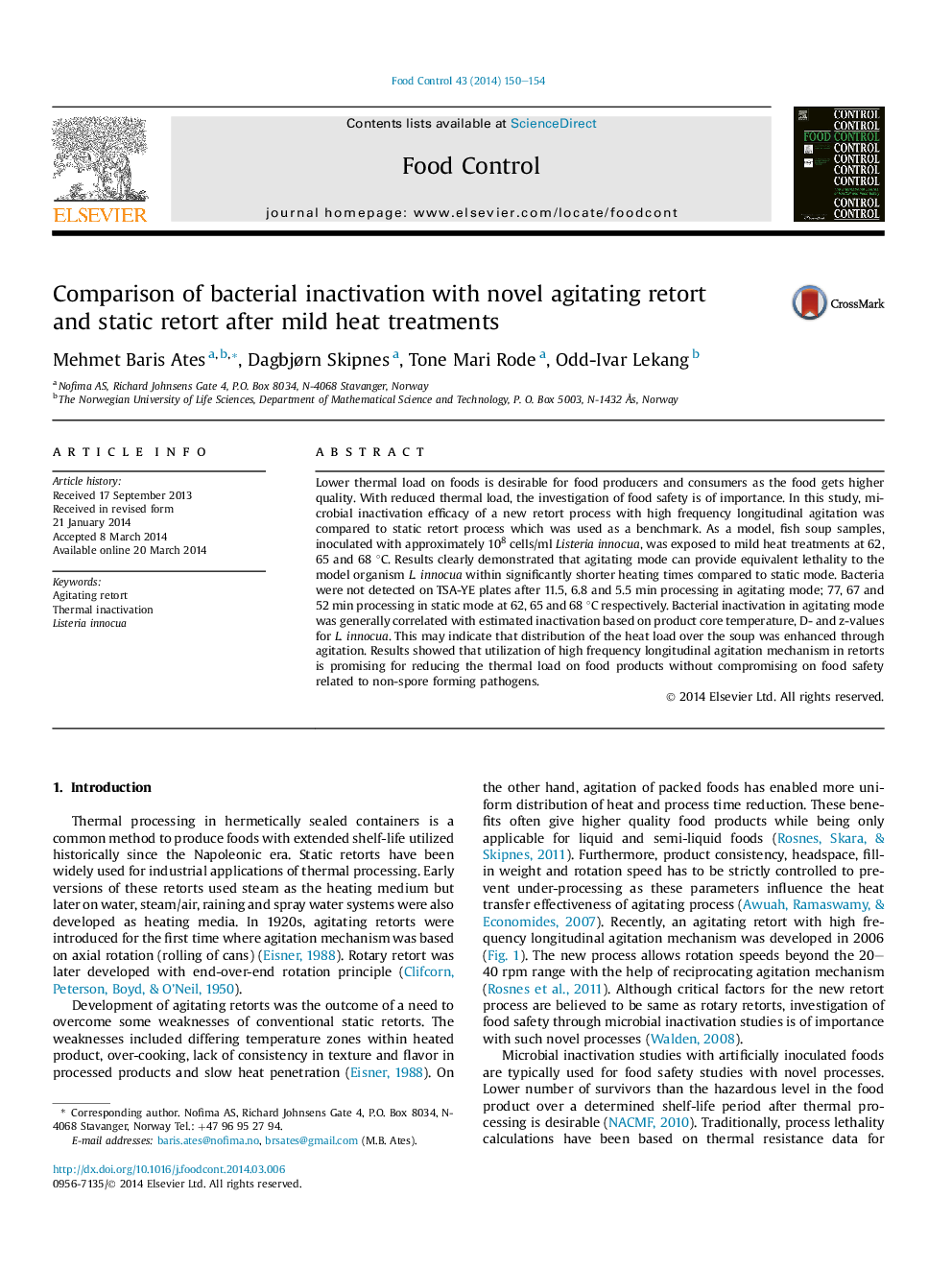| کد مقاله | کد نشریه | سال انتشار | مقاله انگلیسی | نسخه تمام متن |
|---|---|---|---|---|
| 6391776 | 1628419 | 2014 | 5 صفحه PDF | دانلود رایگان |
- Bacterial inactivation in novel agitating retort was compared to static retort.
- Equivalent microbial lethality was observed within shorter times in agitating mode.
- Agitating process enhanced homogenous heat load distribution over the product.
Lower thermal load on foods is desirable for food producers and consumers as the food gets higher quality. With reduced thermal load, the investigation of food safety is of importance. In this study, microbial inactivation efficacy of a new retort process with high frequency longitudinal agitation was compared to static retort process which was used as a benchmark. As a model, fish soup samples, inoculated with approximately 108 cells/ml Listeria innocua, was exposed to mild heat treatments at 62, 65 and 68 °C. Results clearly demonstrated that agitating mode can provide equivalent lethality to the model organism L. innocua within significantly shorter heating times compared to static mode. Bacteria were not detected on TSA-YE plates after 11.5, 6.8 and 5.5 min processing in agitating mode; 77, 67 and 52 min processing in static mode at 62, 65 and 68 °C respectively. Bacterial inactivation in agitating mode was generally correlated with estimated inactivation based on product core temperature, D- and z-values for L. innocua. This may indicate that distribution of the heat load over the soup was enhanced through agitation. Results showed that utilization of high frequency longitudinal agitation mechanism in retorts is promising for reducing the thermal load on food products without compromising on food safety related to non-spore forming pathogens.
Journal: Food Control - Volume 43, September 2014, Pages 150-154
